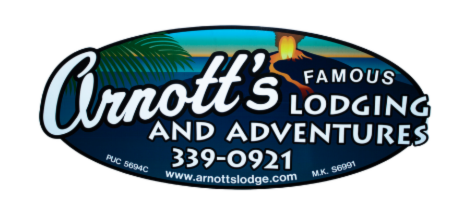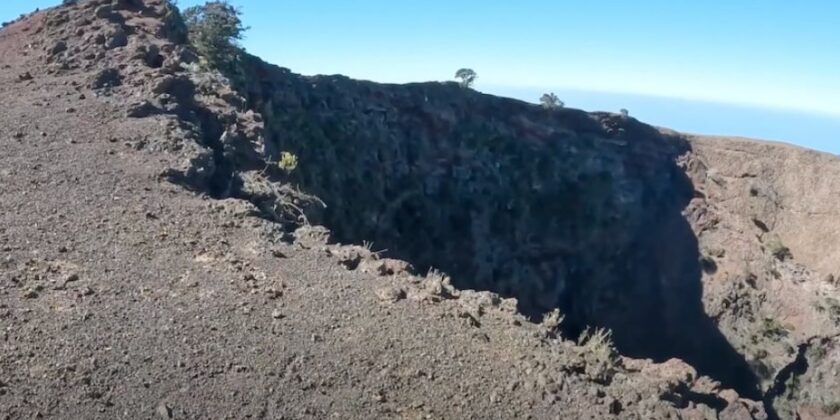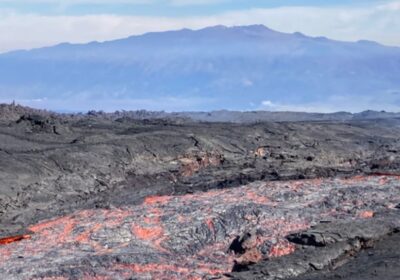Standing on the western slopes of Hualalai volcano, watching the sunset paint the ancient lava flows in hues of amber and gold, I’m reminded why this is one of the Big Island’s most intriguing yet overlooked volcanic treasures. While her more famous sisters—Kilauea, Mauna Loa, and Mauna Kea—often steal the spotlight, Hualalai offers visitors a unique glimpse into Hawaii’s volcanic history without the crowds.
As your guide to this remarkable landscape, I’ve spent decades exploring every accessible corner of Hualalai’s 290 square miles. What fascinates me most isn’t just the volcano’s geological significance, but how deeply it’s woven into the cultural fabric of the Kona region. The rich soil that nurtures world-famous Kona coffee, the stunning coastal views from luxury resorts, and the sacred sites hidden among the lava fields all tell the story of Hualalai’s profound influence on both land and people.
Whether you’re a geology enthusiast hoping to understand volcanic processes, a history buff interested in Hawaiian culture, or simply someone seeking beautiful landscapes off the beaten path, Hualalai volcano offers experiences that will transform your understanding of this dynamic island. Let’s explore what makes this slumbering giant so special, and why it deserves a place on your Big Island itinerary.
History and the Birth of Hualalai Volcano

When was Hualalai volcano created?
Hualalai volcano is what geologists call a “teenager” among Hawaiian volcanoes—younger than ancient Kohala but significantly older than the actively erupting Kilauea. The volcano began forming underwater approximately 800,000 years ago, finally breaching the ocean’s surface around 300,000 years ago.
I often explain to visitors that understanding Hawaiian volcanoes requires thinking in geological time. While standing at Kekaha Kai State Park, where you can see Hualalai’s flows reaching toward the sea, I like to have guests close their eyes and imagine the persistence required to build a mountain from the ocean floor, one eruption at a time, over hundreds of thousands of years.
“This isn’t just rock beneath your feet,” I remind them. “It’s time made solid—layer upon layer of Earth’s history captured in stone.”
How was Hualalai volcano formed?
Hualalai, like all Hawaiian volcanoes, was born from the Hawaiian hotspot—a stationary plume of magma rising from deep within Earth’s mantle. As the Pacific tectonic plate slowly moves northwest over this hotspot at about the rate your fingernails grow, new volcanoes form in sequence, creating the Hawaiian island chain.
Hualalai is classified as a shield volcano, characterized by its broad, gently sloping profile that resembles a warrior’s shield laid on the ground. This distinctive shape comes from repeated eruptions of highly fluid lava that spreads widely before cooling.
During my tours, I often compare Hualalai’s formation to making a layer cake. “Imagine baking thousands of thin pancakes,” I tell visitors, “then stacking them slightly offset from each other over hundreds of thousands of years. Each eruption adds another layer, gradually building the mountain we see today.”
What distinguishes Hualalai from its siblings is its composition. While most Hawaiian volcanoes primarily erupt basaltic lava, Hualalai has produced more diverse and sometimes more explosive eruptions, creating varied textures and formations across its slopes.
What is so Special About Hualalai Volcano?
While driving guests along the winding roads of North Kona, I often point to the massive resorts and luxury communities built on Hualalai’s slopes and ask, “Would you build your dream home on an active volcano?” The nervous laughter that follows opens a perfect door to discussing what makes Hualalai truly special.
Hualalai stands apart from other Hawaiian volcanoes in several fascinating ways. For one, it’s home to over 100 cinder and spatter cones, creating a landscape that varies dramatically as you traverse its slopes. These cones formed during explosive phases of eruptions, when gas-charged lava fountained into the air, cooling and falling as cinders that built up into the distinctive cone shapes you see today.
The volcano also boasts unique geological features rarely seen elsewhere. One of my favorite spots to take adventurous hikers is to a series of volcanic caves where we’ve found olivine crystals—semi-precious peridot—embedded in the walls. These green gems, formed deep within the Earth, were carried to the surface during eruptions, a literal treasure brought forth by the volcano.
But perhaps what makes Hualalai most special is its perfect positioning in what locals call the “goldilocks zone” of Hawaiian volcanoes—not too active to be dangerous for comfortable habitation, yet not so dormant that its fertile soils have weathered away. This sweet spot has created the ideal conditions for the world-famous Kona coffee belt, where volcanic soil rich in minerals but well-drained due to the mountain’s slope produces coffee beans of exceptional quality.
As I tell my guests while they sip freshly brewed Kona coffee at a local farm, “You’re tasting the volcano’s gift—the perfect combination of soil, elevation, rainfall, and temperature that can’t be replicated anywhere else on Earth.”
What Will Hualalai Volcano Look Like in 1 Million Years?

Standing at Kekaha Kai State Park, where ancient lava flows from Hualalai meet the crystal blue Pacific, I often ask visitors to participate in a thought experiment. “Close your eyes,” I suggest, “and imagine we could fast-forward one million years from now. What would we see where Hualalai stands today?”
In one million years, Hualalai will likely be unrecognizable from its current form. Like all Hawaiian volcanoes, once it moves completely off the hotspot, it will become extinct and subject to the relentless forces of erosion. Wind, rain, and waves will gradually wear down its slopes.
The process has a beautiful predictability to it. First, deep gulches will form as rainwater carves channels into the mountain’s flanks. These will eventually develop into amphitheater-headed valleys similar to those seen on older islands like Kauai. The volcano’s shield shape will slowly transform into a more jagged, serrated profile.
Meanwhile, the constant battering of ocean waves will create sea cliffs and eventually reduce much of the island to a submarine platform. Some geologists predict that in a million years, only the highest portions of Hualalai might remain above water, perhaps as a small island or even just a reef.
“This is the life cycle of Hawaiian islands,” I explain to my guests. “Birth through fire, life as paradise, and eventually a return to the sea. We’re just lucky enough to witness Hualalai in its prime.”
What I find most poignant about this inevitable transformation is how it mirrors Hawaiian cultural perspectives on creation and change—the constant cycle of destruction and renewal that permeates Hawaiian mythology about Pele, the volcano goddess, and her relationship with the islands she creates.
Will Hualalai Volcano Erupt Again?

When guests check into the luxury resorts along the Kona-Kohala coast, few realize they’re vacationing on the slopes of what scientists classify as an active volcano. The question of future eruptions isn’t just academic—it has real implications for development, insurance, and emergency planning.
The answer is unequivocal: yes, Hualalai will almost certainly erupt again. Though it appears peaceful now, this volcano has a pattern of erupting every 200-300 years. Its last significant eruption occurred in 1800-1801, when lava flows reached the ocean, covering villages and fishponds. Simple math tells us we’re currently within the historical window for another eruption.
“Look there,” I often tell visitors, pointing to the black expanse of the Kaupulehu flow that reaches the coast near the Four Seasons resort. “That’s not ancient history—that flow is barely 220 years old, younger than the United States as a nation.”
The U.S. Geological Survey rates Hualalai as a moderate threat volcano and actively monitors it for signs of unrest. Sensitive instruments detect subtle changes in ground deformation and earthquake activity that might signal magma movement beneath the surface.
In 1929, an earthquake swarm beneath Hualalai indicated magma was on the move, though no eruption followed. Similar swarms could provide warning before future eruptions, allowing time for evacuation if necessary.
For residents and businesses on Hualalai’s slopes, living with this risk is part of the bargain for inhabiting such a beautiful and fertile landscape. As I remind visitors, “In Hawaii, Pele gives with one hand and may someday take with the other. It’s all part of life on a volcanic island still in creation.”
Things to Do at Hualalai

While much of Hualalai’s summit and upper slopes remain private property, there are still remarkable ways to experience this magnificent volcano. Here are some activities I recommend to visitors seeking to connect with Hualalai’s unique landscape:
Explore Kaloko-Honokōhau National Historical Park: At the volcano’s coastal base, this park preserves ancient Hawaiian settlements, fishponds, and petroglyphs, all built on Hualalai’s lava flows. Walking the trails here connects you to both the geological and cultural history of the area.
Tour a Kona Coffee Farm: The middle elevations of Hualalai (between 1,000-2,500 feet) host dozens of coffee farms that offer tours and tastings. I particularly recommend the smaller, family-run operations where you can learn about how the volcano’s soil and climate create the perfect conditions for coffee cultivation.
Visit Manini Beach and Kekaha Kai State Park: These coastal areas offer dramatic views of Hualalai’s lava flows meeting the ocean. The contrast between black lava, white coral beaches, and blue water makes for stunning photographs and snorkeling.
Take a Helicopter Tour: For those with the budget, nothing beats seeing Hualalai from above. Helicopter tours reveal the volcano’s massive shield structure, numerous cinder cones, and how its flows have shaped the Kona coast.
Hualalai Trading Company: Located in the Kona Village, this shop offers locally made products and educational materials about the volcano and its influence on local culture and agriculture.
Stargazing on the Lower Slopes: While not as famous for astronomy as Mauna Kea, the lower western slopes of Hualalai offer excellent stargazing opportunities with warmer temperatures and easy access.
“The beauty of Hualalai,” I tell my guests, “is that you don’t have to be a hardcore hiker or volcanologist to appreciate it. The volcano touches everything in North Kona—from the coffee in your cup to the black sand between your toes. Just by being here, you’re experiencing Hualalai’s gifts.”




